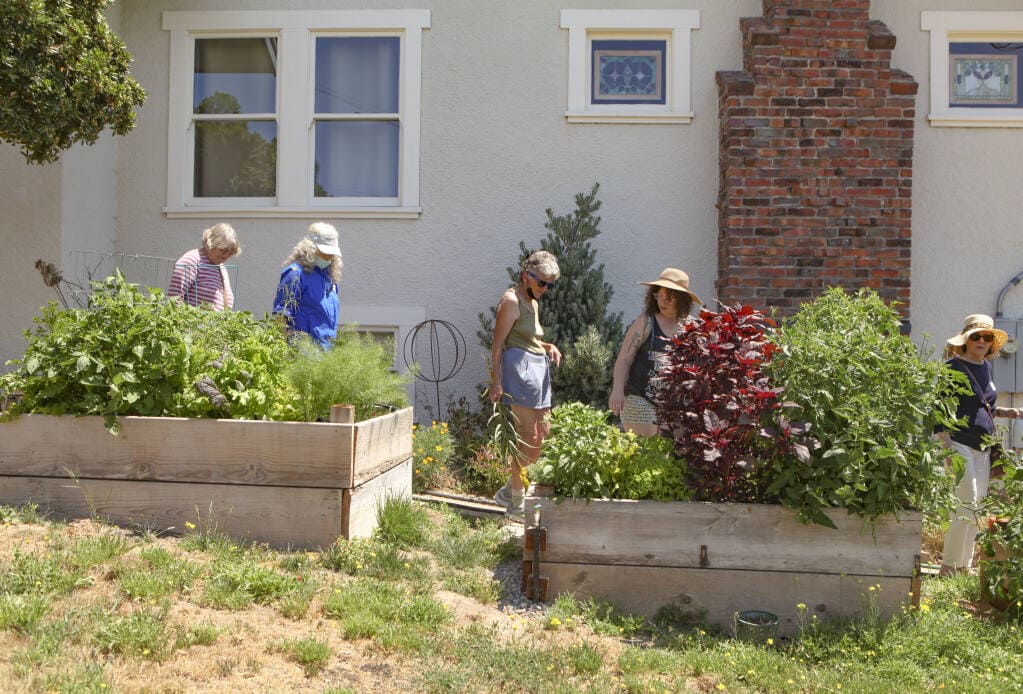KERRY BENEFIELD
THE PRESS DEMOCRAT
October 8, 2021
View Original Article Here
Has watching the drought dry up your garden got all of you green thumbs pulling your hair out? Making it turn gray?
Embrace the gray, experts say. Graywater, that is.
Graywater is what normally goes down the drain and into the sewer after you run a load of laundry or take a shower.
It’s not safe to drink but perfectly safe to irrigate the plants and trees in your yard and offset the reductions that you have (hopefully) made to irrigation schedules as our drought deepens.
“Ultimately that water is still good,” said David Liebman, energy and sustainability manager of capital projects at all Santa Rosa Junior College facilities. “It’s water that your plants and landscape need and also you get double the value out of it.”
The water is there, you have paid for it, why flush it into the sewer when a second use can give your garden new life?
As municipalities ask consumers to cut back on their water use and people are increasingly urged to forego lawns for more drought-tolerant native landscape choices, Petaluma-based nonprofit sustainable living organization Daily Acts, in collaboration with Sonoma Water and Greywater Action, are hosting a series of webinars covering how to set up graywater irrigation systems.
“For anyone looking for best practices or who are just curious, we can’t recommend these webinars…enough,” Daily Acts programs coordinator Connor DeVane said.
The three upcoming webinars are broken into three levels of project: An introduction to graywater uses, designing a laundry-to-landscape system, and the last is how to install a full-house diversion program — a project that, unlike the laundry-to-landscape style, needs a permit.
In addition to the webinars, Daily Acts hosts hands-on group tutorials during which a graywater system is installed on the spot at a volunteer’s home.
But both Liebman and DeVane said that a handy do-it-yourselfer can usually handle the creation of a laundry-to-landscape system solo.
General needs? A three-way brass valve, some PVC piping, more flexible valves and some fittings. Cost? Approximately $300.
The three-way valve allows for some override, say, for the occasional load of laundry that uses bleach. But on most loads, the pipe routes the used water out of the house or garage and into the yard. More flexible piping is laid underground and delivers the water into mulch basins the proper distance from, ideally, fruit and shade trees or shrubs.
Hopefully it goes without saying but don’t use your graywater on a lawn, mostly because people shouldn’t have lawns at this point but also because graywater isn’t great for sod.
Putting the water into the ground has long term benefits beyond your yard, Liebman said.
“The climate change models for Sonoma County show that we are going to be experiencing more and more of these types of droughts,” he said.
The rainfall we do get is expected to come in “higher intensity bursts” which, unlike steadier rainfall, usually means it does not absorb into the ground as well.
A good, regular soaking with graywater can have long term payback, Liebman said.
Hence, the increasing interest in making better use of the estimated 5,000-8,000 gallons of water an average family of four uses annually doing laundry.
“Interest has been really big,” DeVane said. “We have been getting lots of requests for it.”
Invest a little time, and a little sweat equity, and a graywater system is largely hassle-free, Liebman said.
“It becomes kind of automatic and something that we don’t really think about,” he said.
I mistakenly thought an introductory way into the virtues of graywatering would be collecting laundry water in a bucket or container in one’s utility sink.
It’s usually undertaken with the best intentions, but it’s generally not a sustainable strategy, both Liebman and DeVane said. Turns out it’s harder than it looks.
“The bucket is great in concept but it’s work and that’s the last thing people want to do,” Liebman said.
With a little bit of investment, this system gives new life to water that would otherwise be utterly wasted. And it adds up.
“First of all, it definitely helps,” DeVane said. “Every drop counts, right? We need to start looking at every drop of water as a precious resource.”
And it’s not just your load of laundry, he said.
People talk. If you tell a neighbor how easy it is and that you will help them install a system, suddenly one washing machine turns to three, four, the entire block, he said.
“It’s pushing this consciousness shift,” he said. “It behooves us to look at water differently, not like ‘It’s gone and I never think about it again.’ We are using it and reusing it creatively.”
You can reach Staff Columnist Kerry Benefield at 707-526-8671 or [email protected]. On Twitter @benefield.


